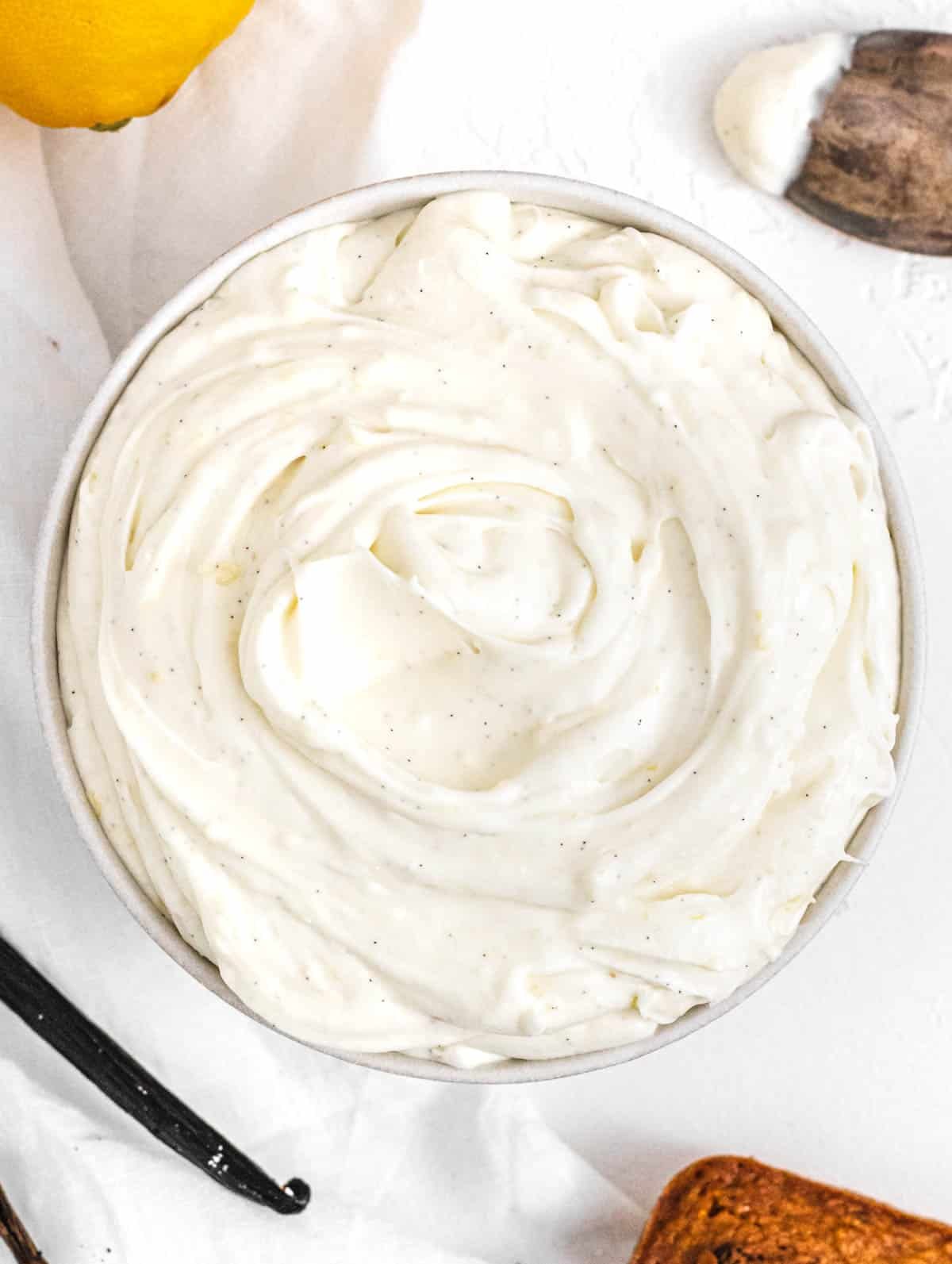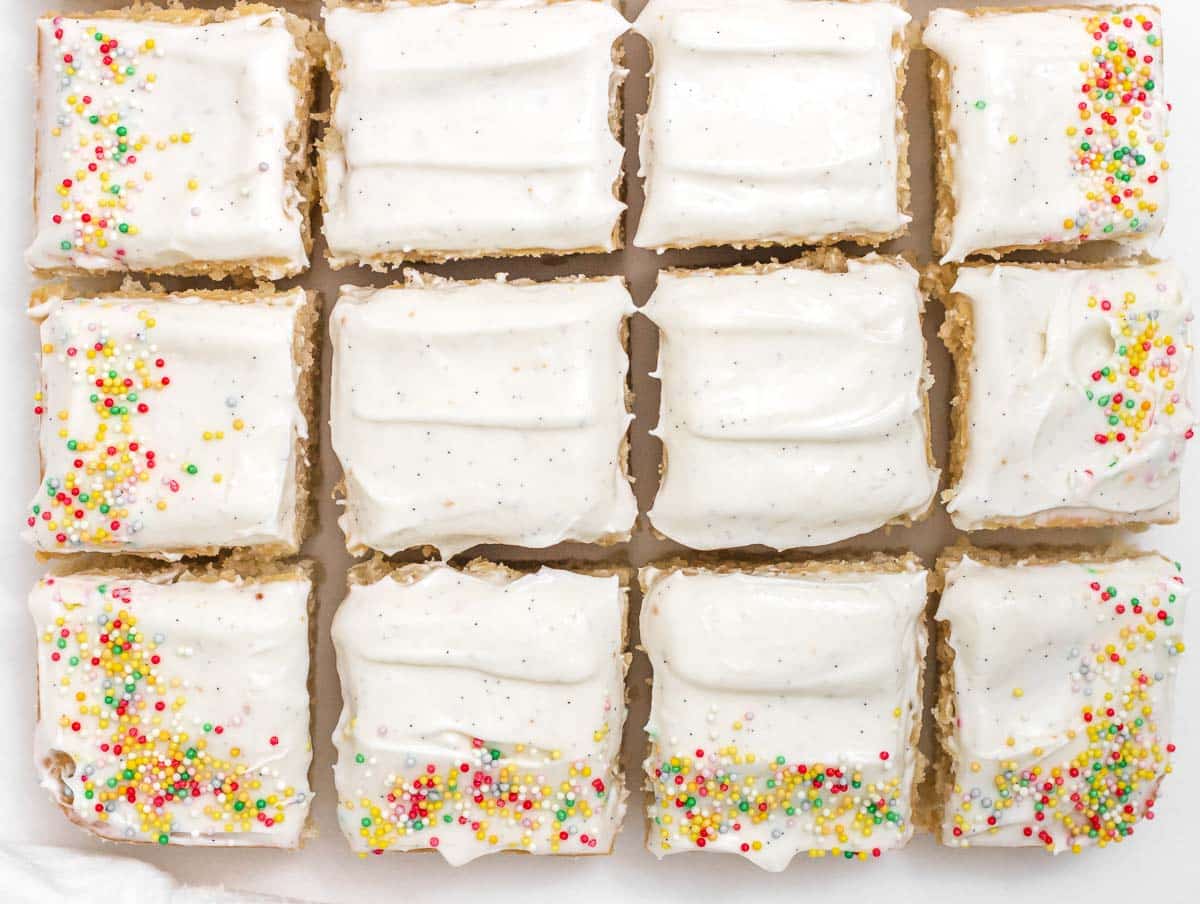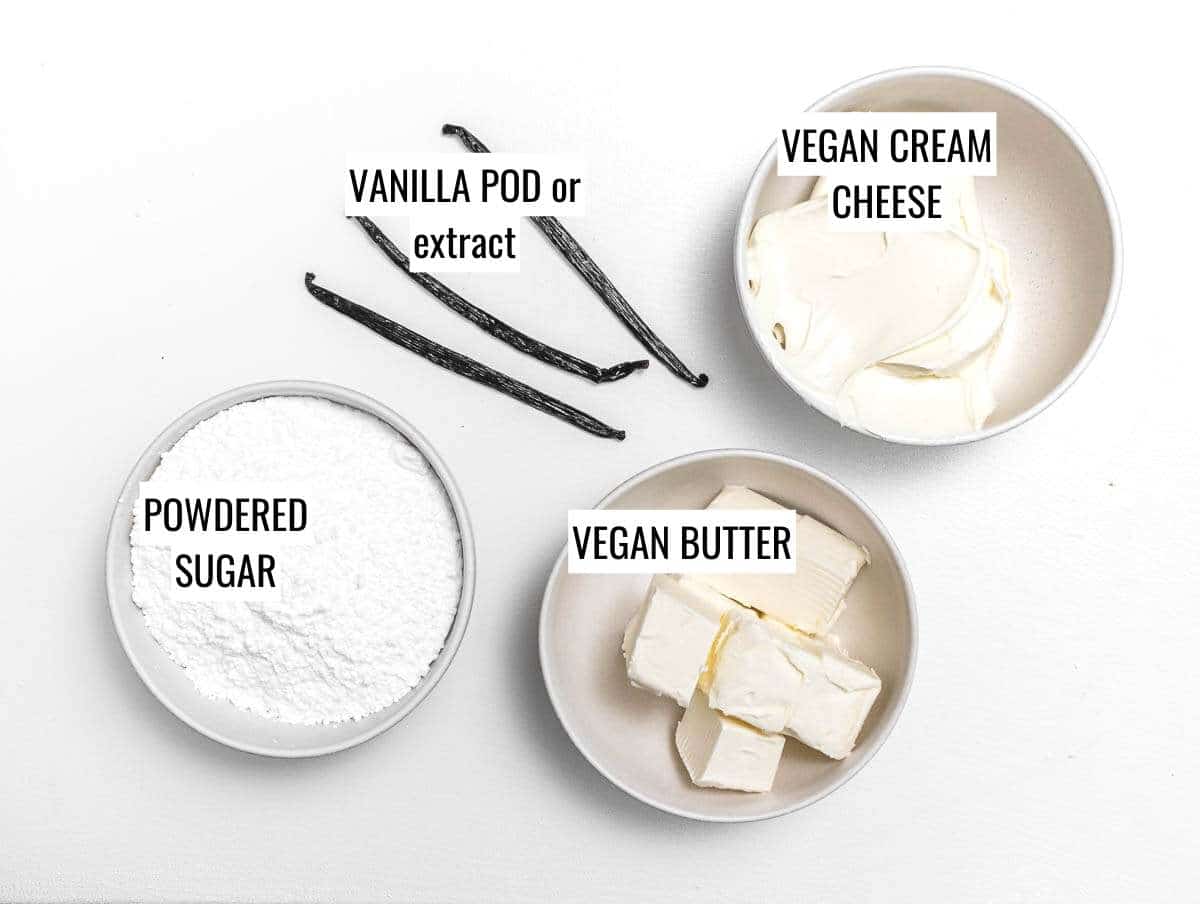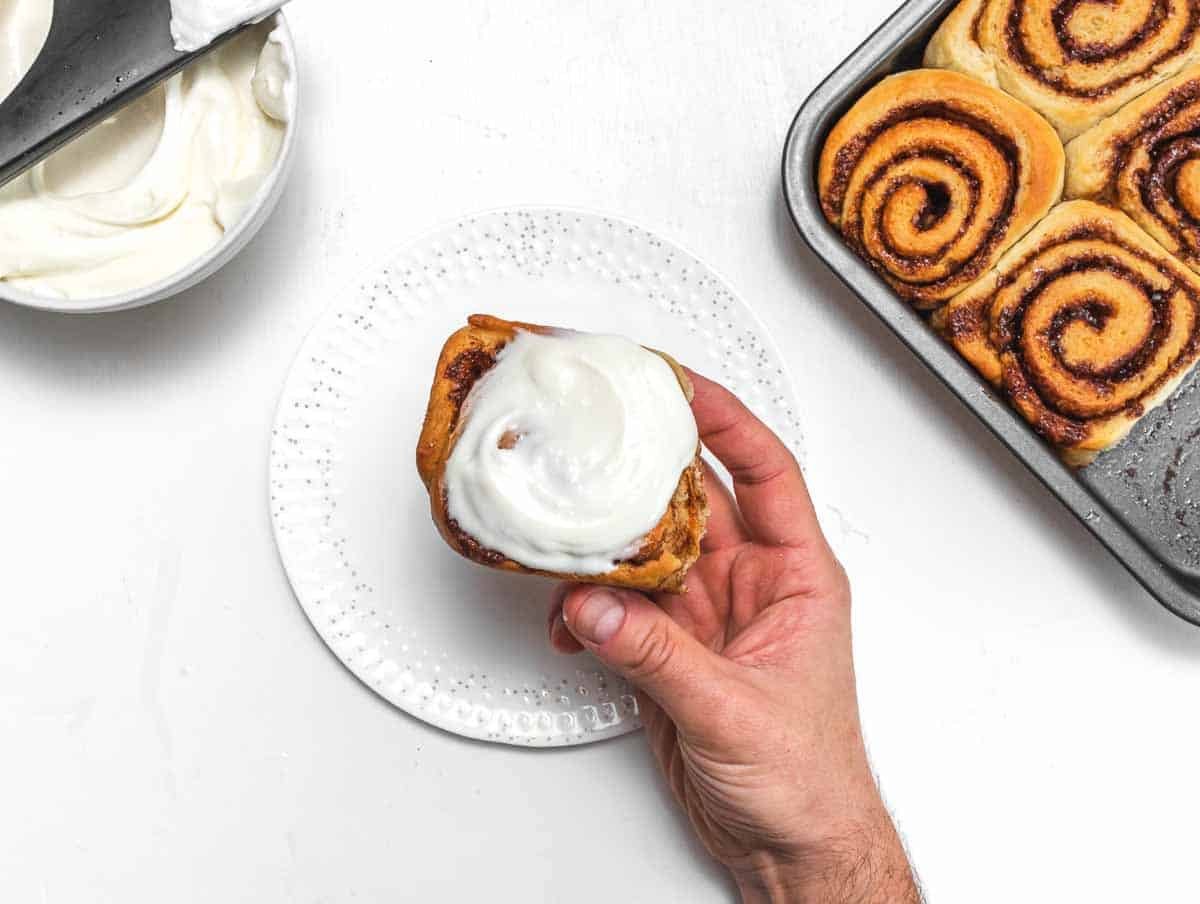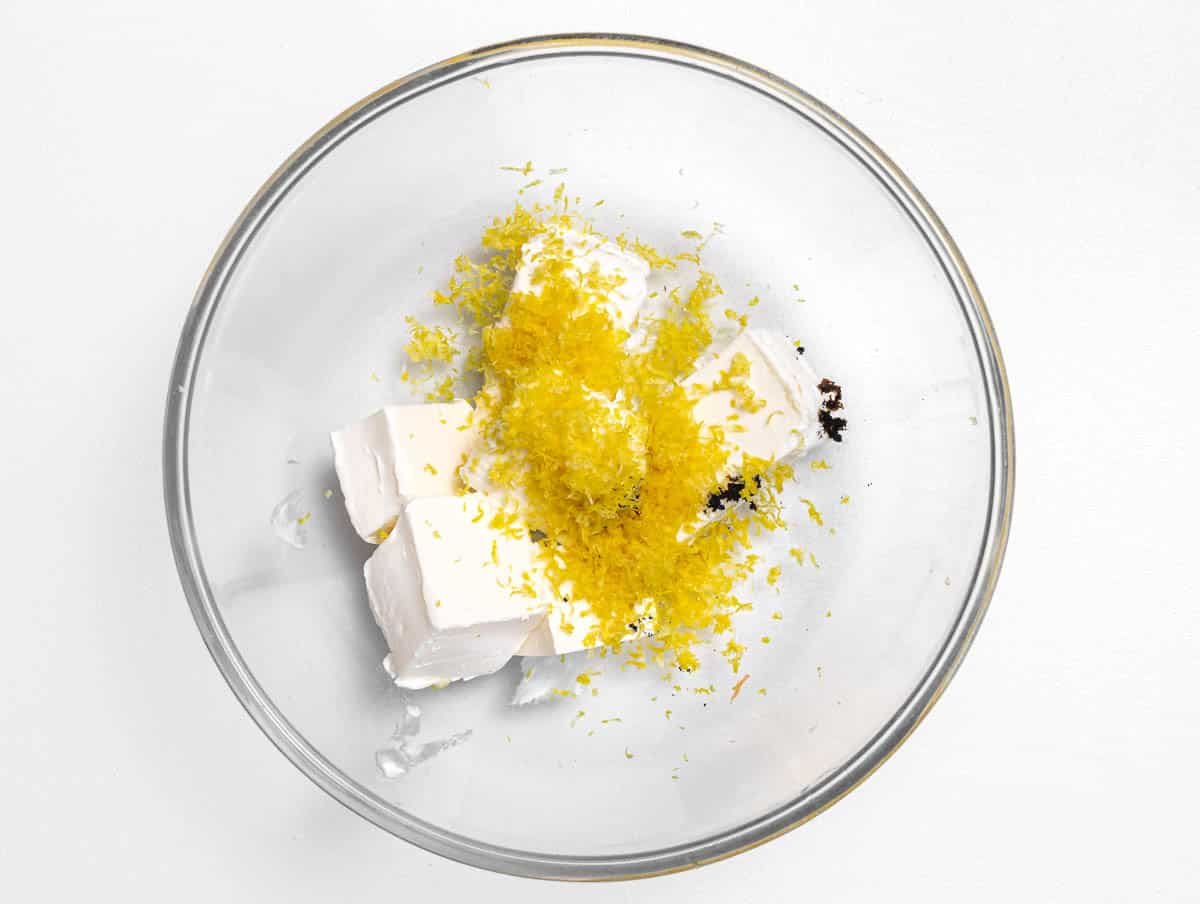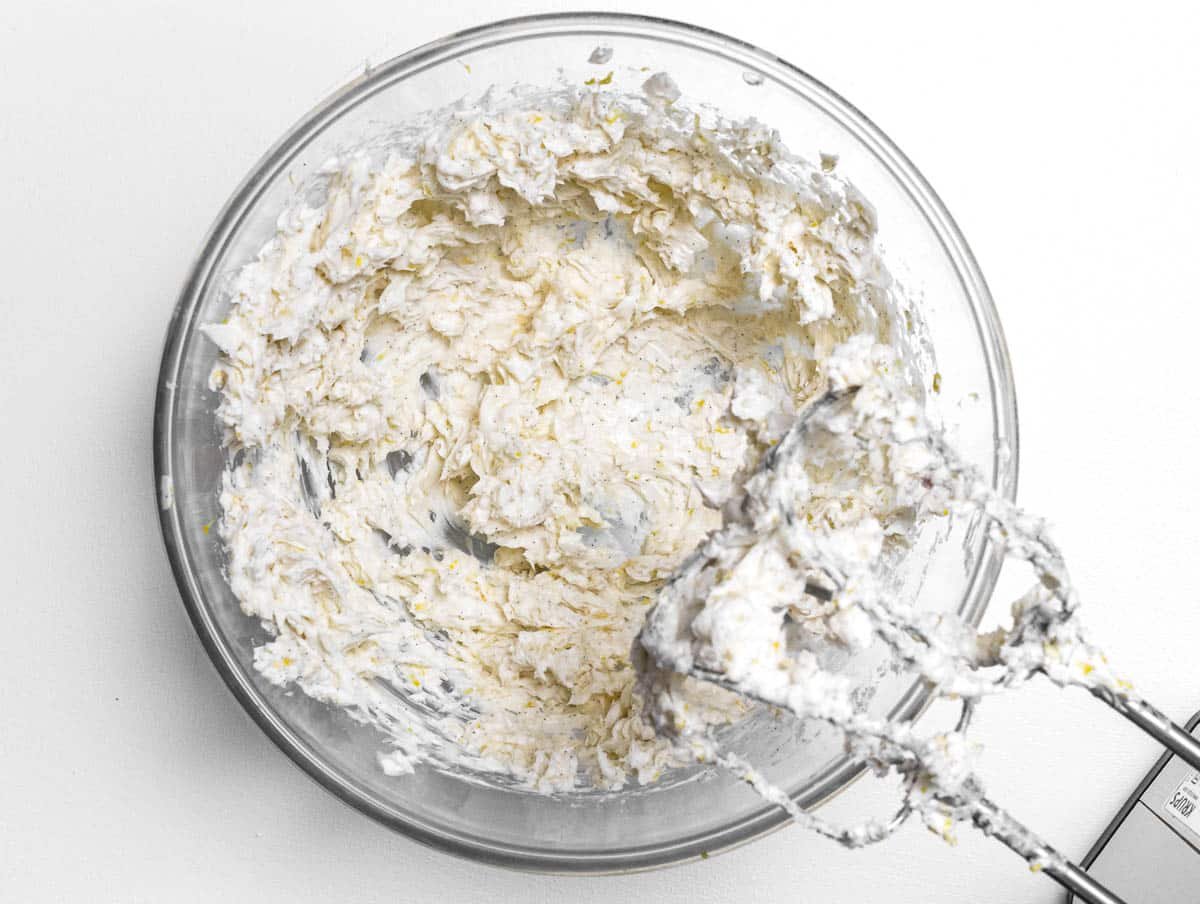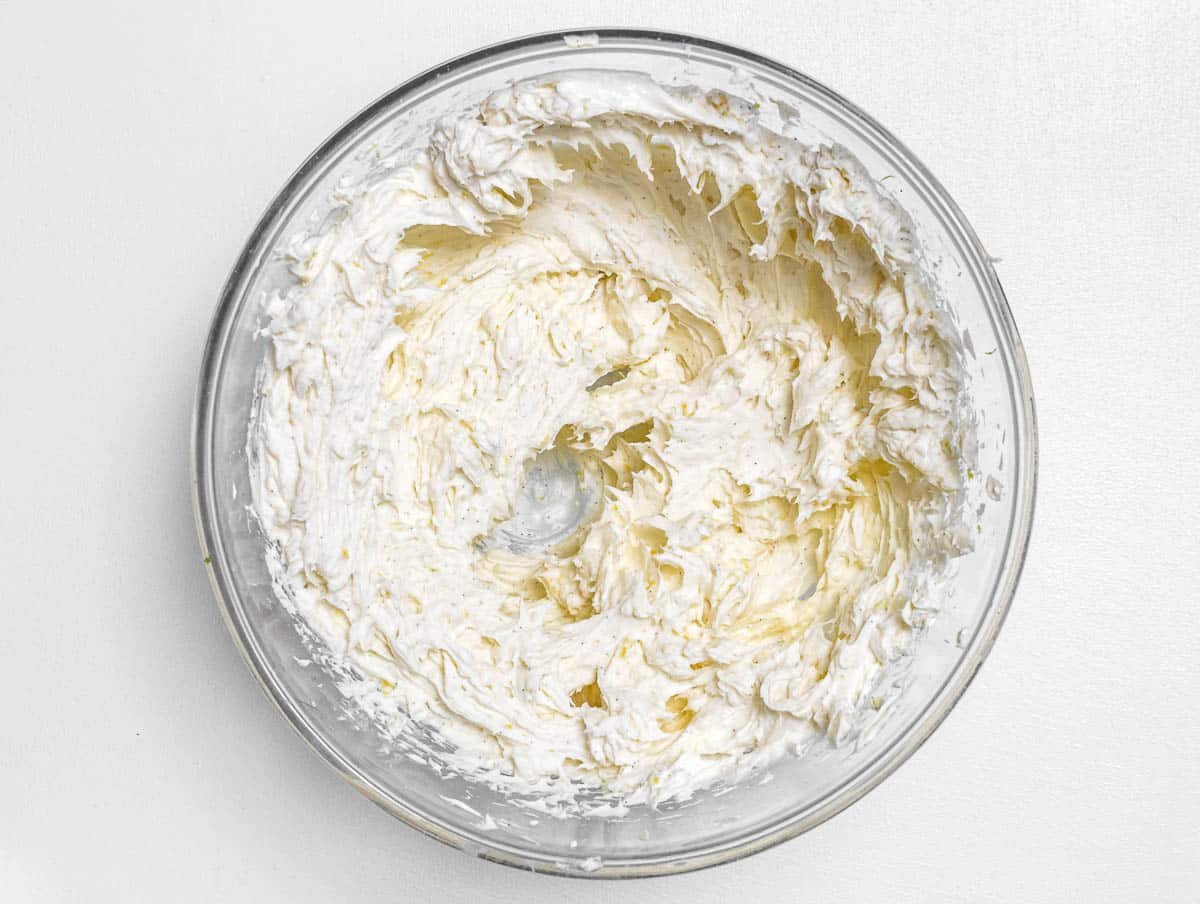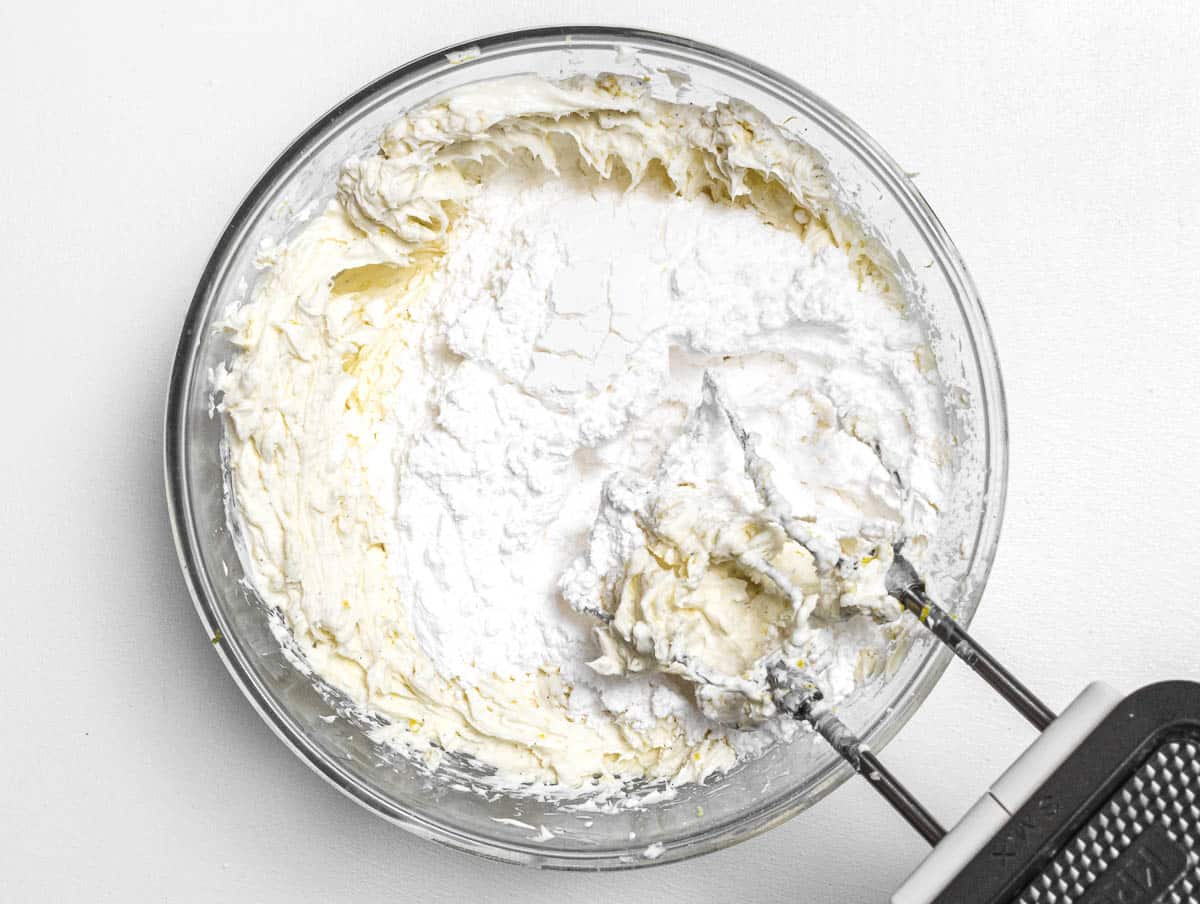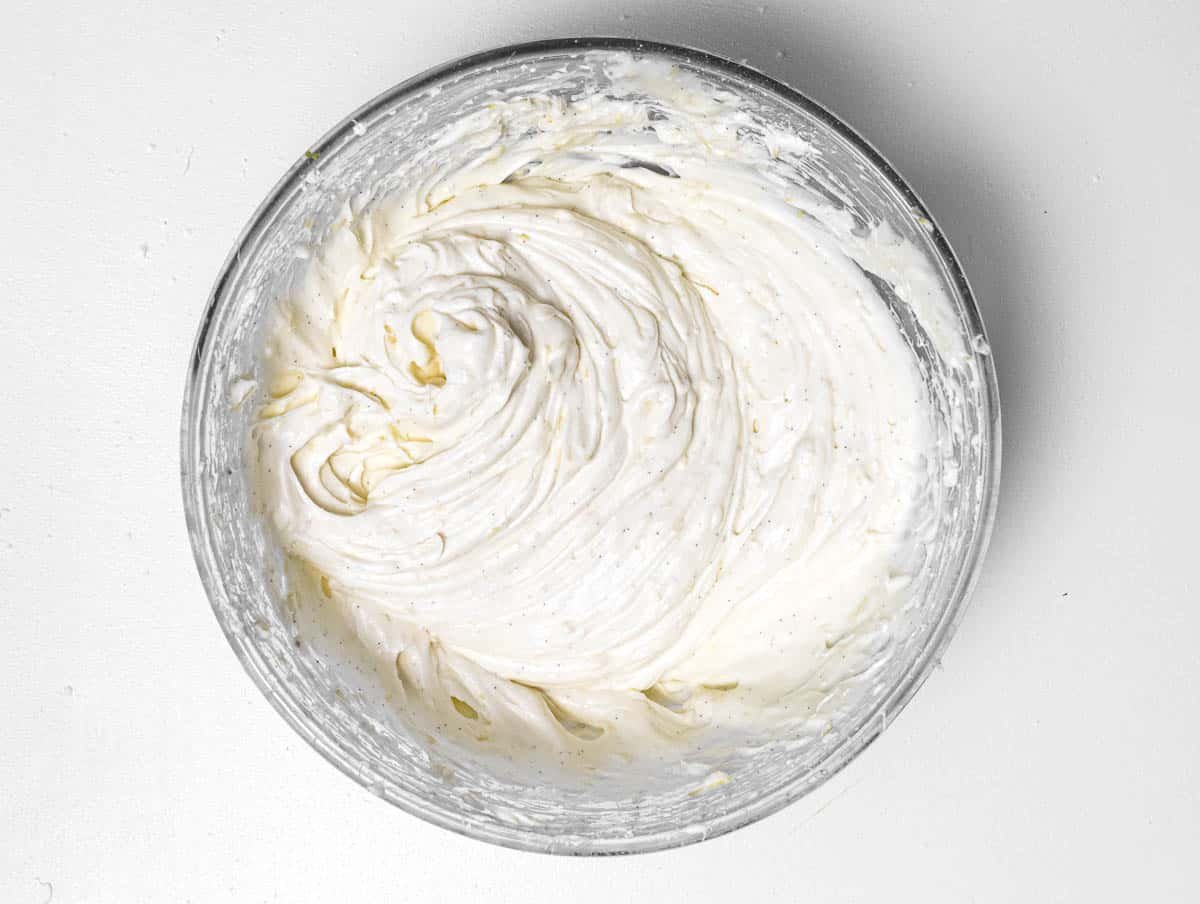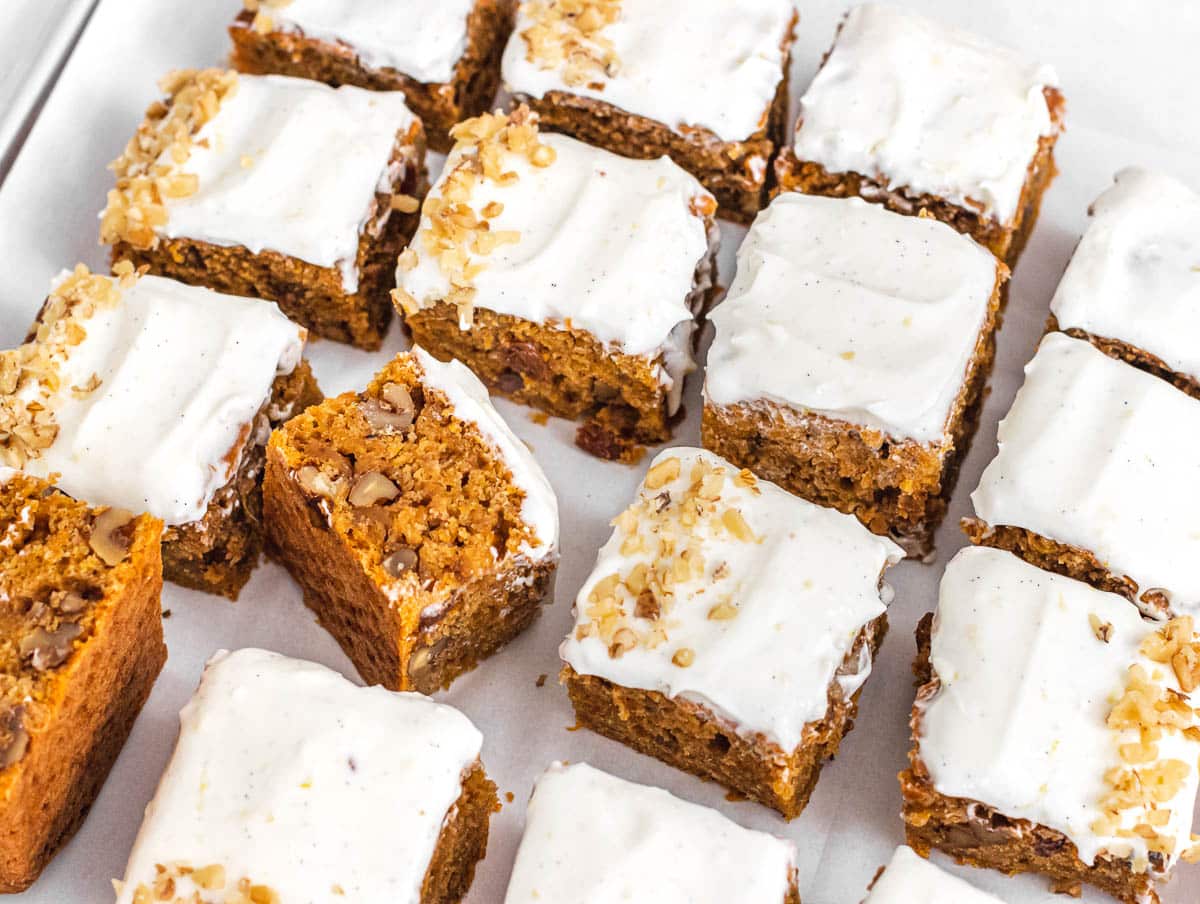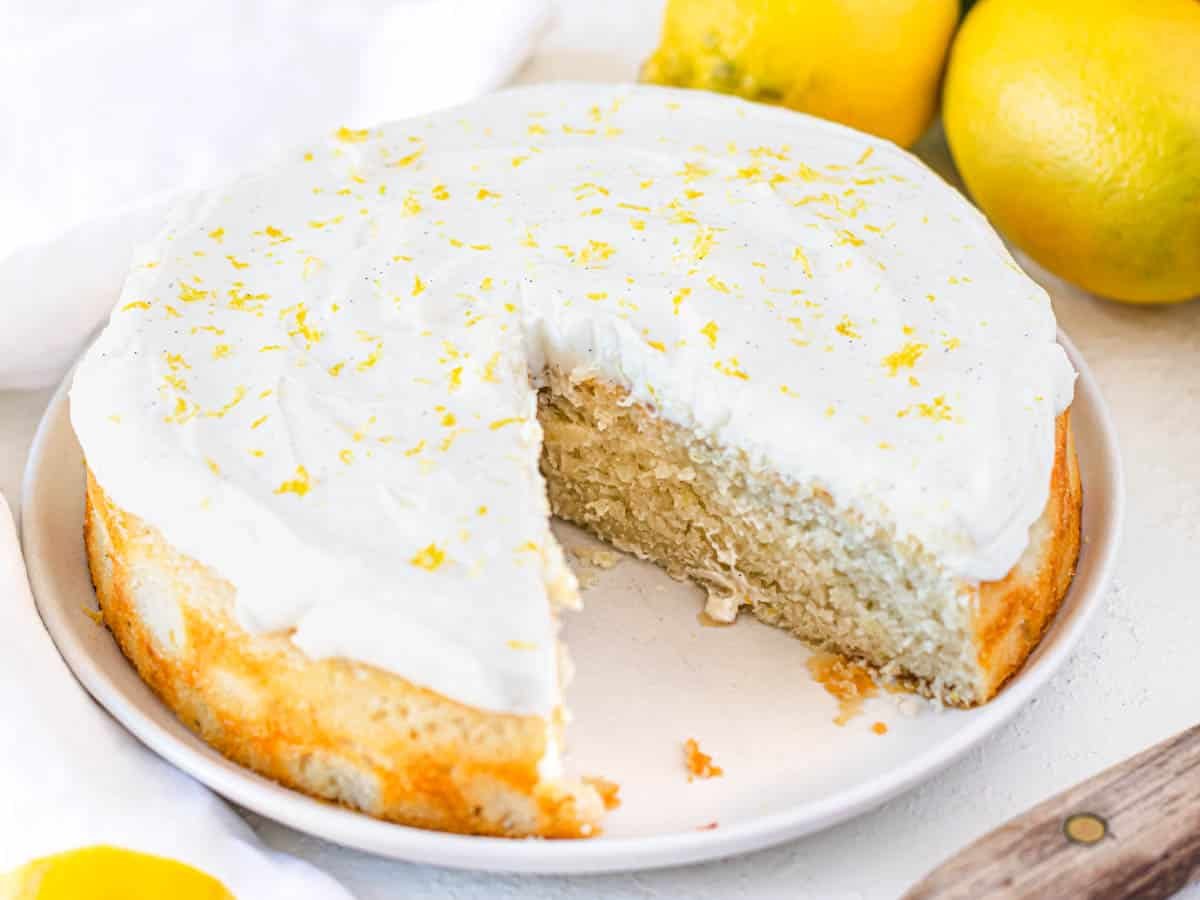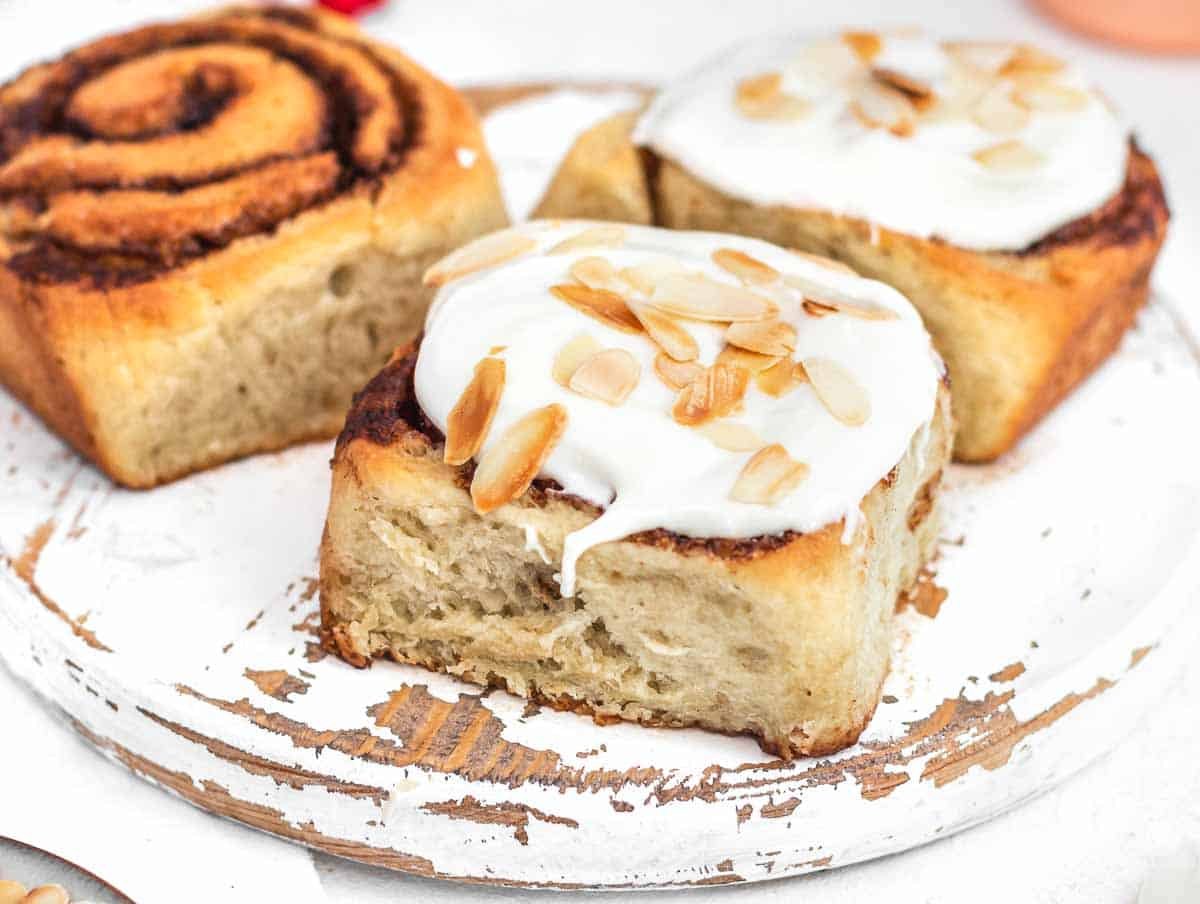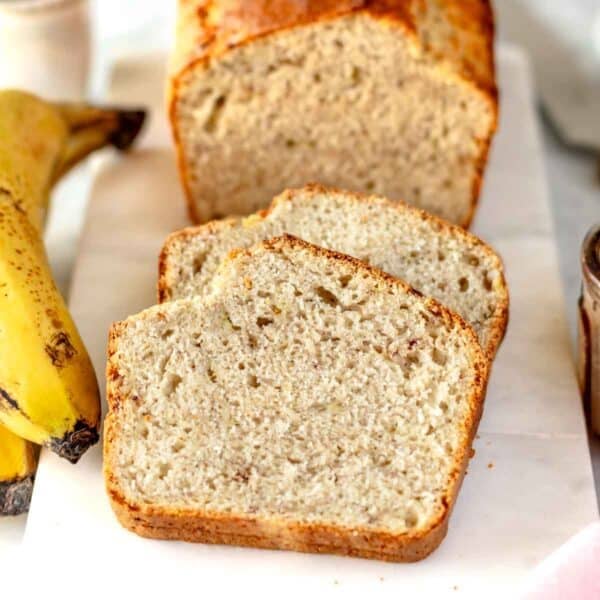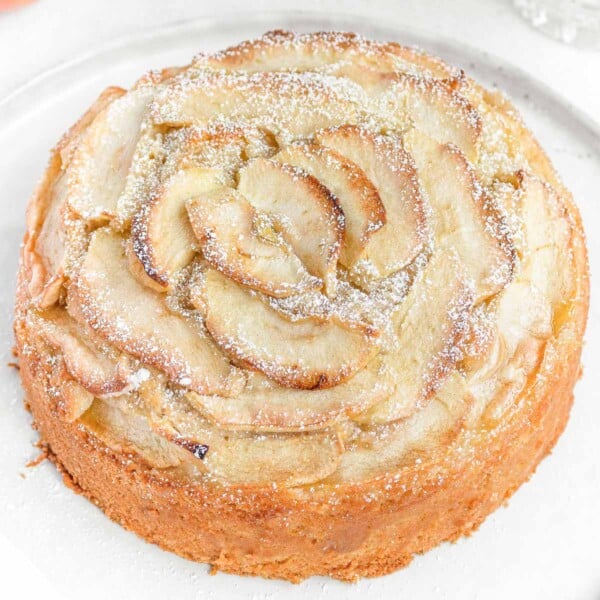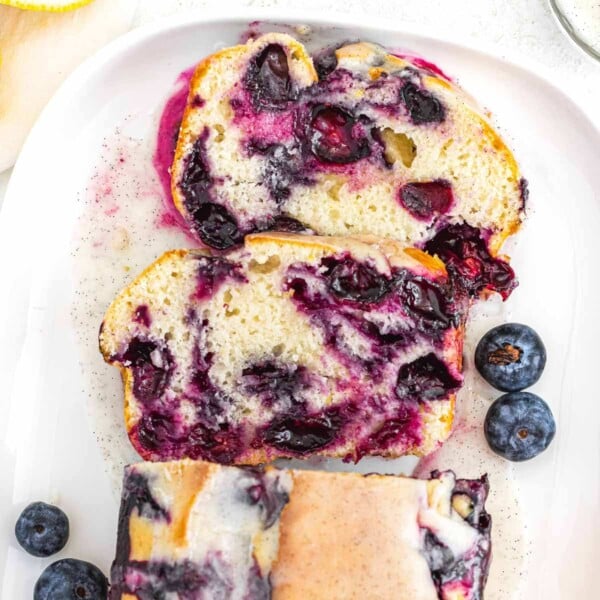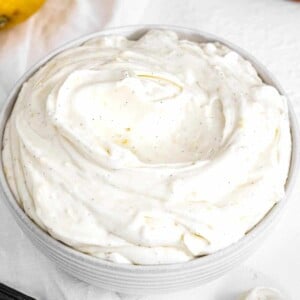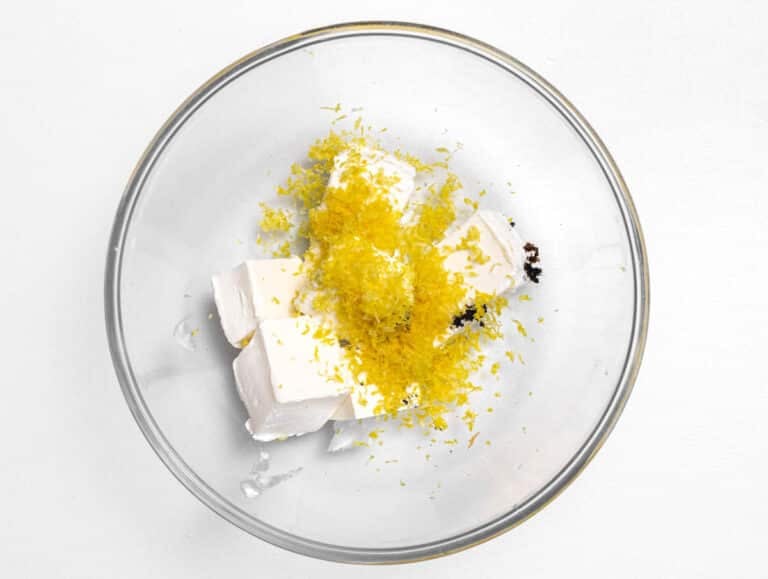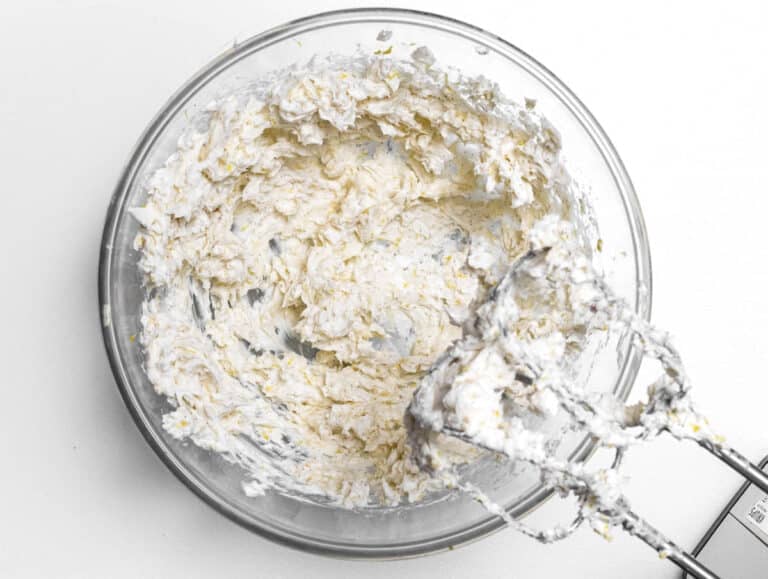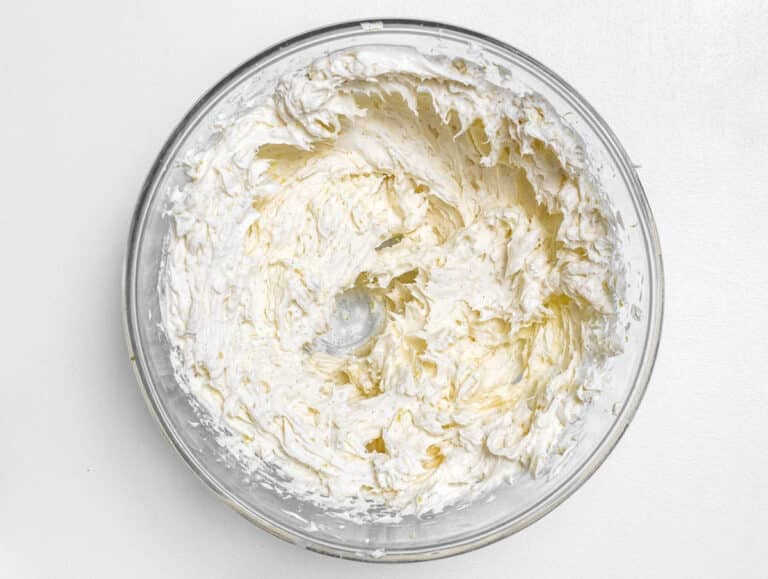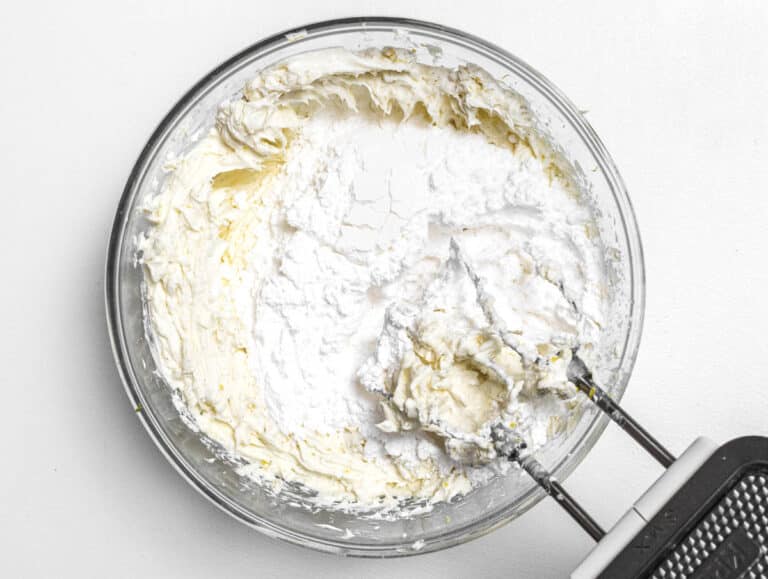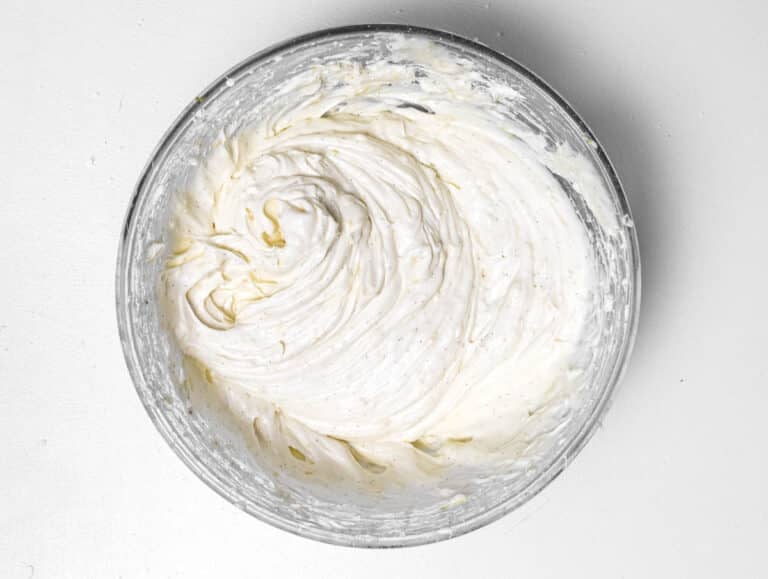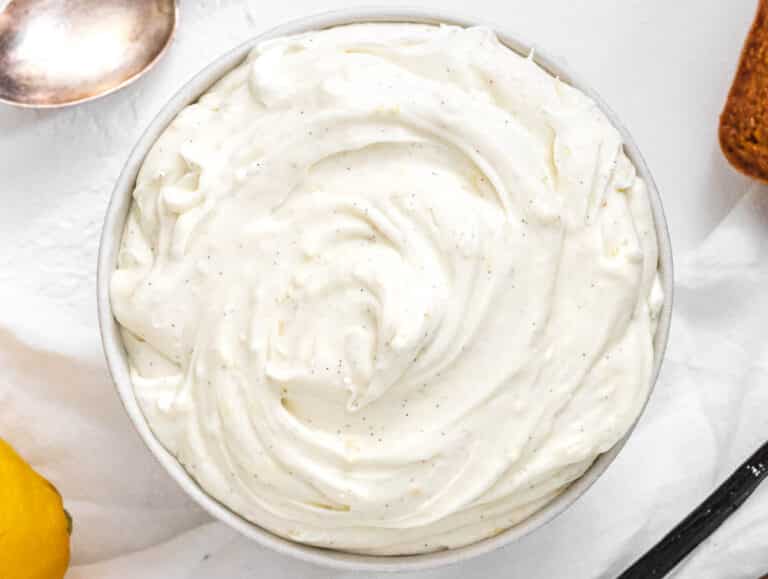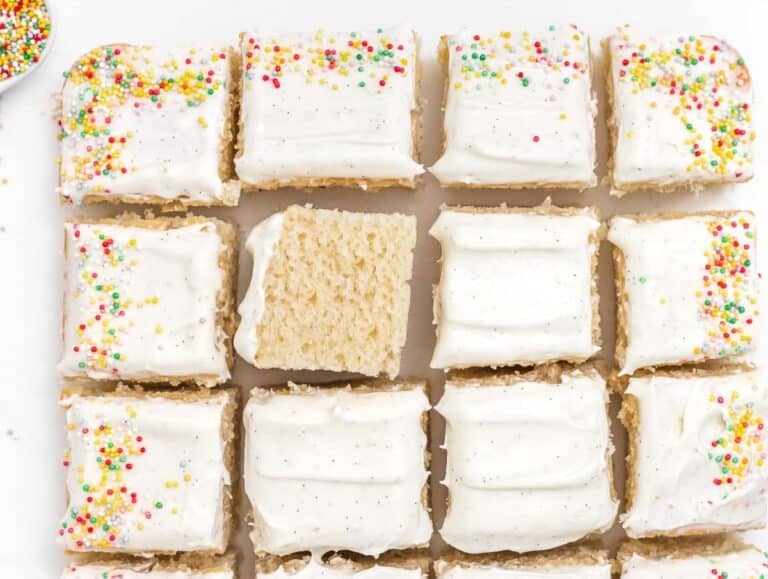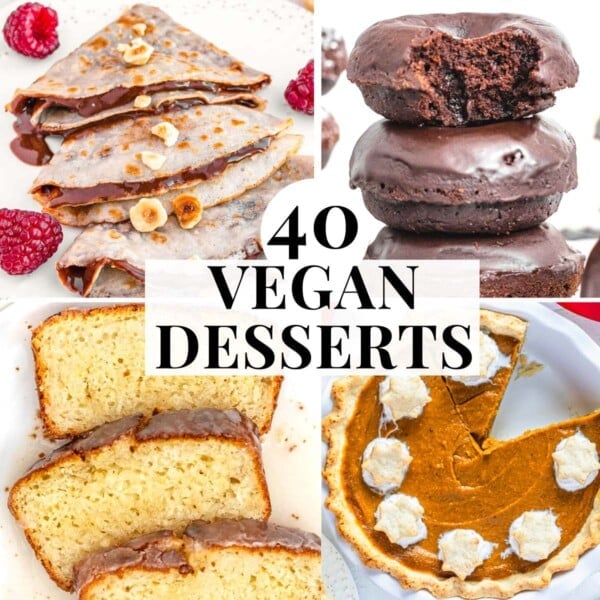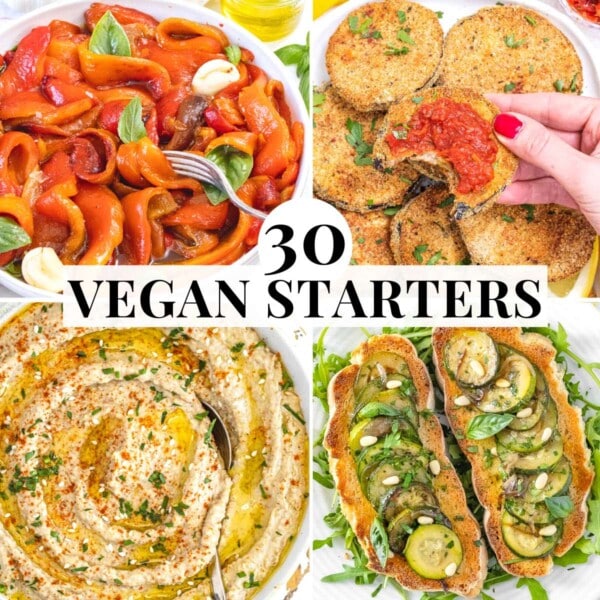The recipe is easy to make, just like regular cream cheese frosting, and you can flavor it with vanilla, lemon, or your favorite aromas. Check out our best plant-based dessert recipes!
Ingredients
Instructions
Serving Suggestions
Tips
Make Ahead & Storage
More Vegan Desserts
Even if you don’t live in a big city, chances are that your local supermarket keeps a brand or two of vegan cream cheese and vegan butter. And the quality, consistency, texture, and taste of those products have improved a ton in the last couple of years, so there’s no excuse not to try and make a vegan frosting for your next cake. You can expect a frosting that is quite thick (not as thick as frosting made with dairy products, of course, but still really good), creamy, tangy, and velvety-smooth. So be it for ethical reasons, health reasons, or just curiosity, here’s how to make the best vegan cream cheese frosting. Note: we make mostly one-layer cakes on this blog, so this dairy-free cream cheese frosting recipe is enough to frost ONE 8 to 9-Inch layer or a little more than 12 cupcakes. If you make a two-layer cake, you can easily double the recipe. You can spread it or use it in a piping bag. Our top favorite brands are “Violife just like original cream cheese” (probably our favorite for frosting because it’s as thick as regular cream cheese), Wayfare, Simply V, and Trader Joe’s. Other brands are Kite Hill, The Dairy-Free Co, Daya, So Delicious, and Miyoko’s. In general, try to get a cream cheese that is firm right out of the fridge, not a soft one. The best ones are made with coconut oil because that’s a saturated fat that keeps its solid form well. Vegetable oil-based cream cheese won’t get firm enough. If you have allergies, there are nut-free, gluten-free, and soy-free products you can choose from.
Vegan butter
Like with cream cheese, there are several dairy-free and vegan butter brands out there. Pick one that is firm, or even better, solid, not the spreadable kind. We recommend the ones that come in stick form – they are generally firmer and easier to measure than the ones that come in a tub. Some good ones are Violife, Earth Balance, Om Sweet Home, Miyoko’s, Fora, and Melt Organic. Vegan margarine can work, but only if solid and in stick form, made with coconut oil or palm oil (which is often not super ethical, so you might want to avoid it).
Powdered sugar
You might want to use organic powdered sugar if you are a strict vegan. You can’t replace powdered sugar to add sweetness to this vegan frosting recipe.
Vanilla, Lemon Zest, or both
We like to add a vanilla and lemon aroma to our vegan cream cheese frosting since the dairy-butter flavor is somewhat lacking. You can use a good quality vanilla extract or, even better, the beans in a vanilla pod. We love using a real vanilla pod because they are dry and won’t make your frosting thinner. Also, you can see the black seeds in the frosting, and they look (and taste) wonderful. For lemon aroma, we recommend using the grated zest of an organic lemon rather than lemon juice or lemon extract. Again, try to minimize liquids. The lemon zest adds a nice tang. We don’t recommend adding salt to this recipe because most vegan cream cheeses have a slightly salty aftertaste. Note: due to the lack of saturated animal fat, vegan butter and vegan cream cheese won’t be as firm at room temperature as their dairy counterparts. If your vegan cream cheese gets runny, let it firm up for a few minutes in the freezer or the fridge. To a large mixing bowl, add softened vegan butter and your aroma of choice. Here we use the grated lemon zest for a tangy flavor and the seeds of a vanilla pod for a cozy flavor and beautiful look. To use the vanilla seeds, cut the pod in half lengthwise and scrape off the seeds with the tip of a small knife. Tip: try to use dry and not liquid aromas, as they might make your frosting runnier. Beat the butter with a hand mixer or stand mixer with the whisk attachment until creamy (30 seconds max). Don’t over-beat. Add vegan cream cheese to the bowl with the butter. Make sure to drain excess liquid from the cream cheese if there’s any. Beat until combined (30 seconds max). Don’t over-beat. Add powdered sugar all at once. Sift it beforehand if you notice that your powder sugar is lumpy. Beat on low first and medium later until the powder sugar is fully incorporated, and your vegan cream cheese frosting is velvety smooth (30 seconds max). Don’t over-beat. Scrape down the sides of the bowl with a spatula, then give it a final stir. Tip: You can add more or less powdered sugar based on your preference. Stick in a finger and taste test, and add more sugar if you like your frosting a little sweeter. Let firm up in the refrigerator for at least 30 minutes or in the freezer for at least 15 minutes before using it to frost cakes, cupcakes, and more. Put the cakes you frosted back in the fridge to store them, as the frosting will get too soft at room temperature. Top it with this delicious frosting for one of the best and coziest cakes ever. Check out our carrot cake recipe.
Easy Vanilla Cake
This single-layer vanilla cake is made with a few easy–to–find ingredients and a delicious cream cheese frosting. You’ll get a light and airy crumb that is pillowy soft and has just the right amount of vanilla and moisture.
Vegan Lemon Cake
An easy-to-make one-layer soft and moist lemon cake topped with delicious vegan cream cheese frosting. Perfect for an afternoon snack with tea or as a light and zesty dessert. Check out our vegan lemon cake recipe.
Vegan Cinnamon Rolls
Our vegan cinnamon rolls are so light, fluffy, and so delicious no one will know they are vegan. Top them with our delicious vegan cream cheese frosting for a dessert/brunch/breakfast that no one can resist. Check out our vegan cinnamon rolls recipe.
Don’t add unnecessary liquids
Some vegan cream cheese recipes call for adding milk or cream, but that’s not necessary, and it will make your frosting too thin. Also, drain excess liquid from your vegan cream cheese and use aromas in dry form rather than liquid if you can. For instance, substitute grated lemon zest for lemon extract and the seeds of a vanilla pod for vanilla extract. The less liquid, the better.
Don’t over-beat it
The more you beat it, the thinner it gets. So try to beat it as little as necessary to combine the ingredients and make a smooth frosting.
Apply on cold cakes
Ensure your cakes, cupcakes, muffins, and cinnamon rolls are completely cooled before applying the frosting. Since there are no saturated animal fats, vegan frostings melt faster than non-vegan ones.
Put it back in the fridge (or freezer)
Let the cream cheese cool down and firm up in the fridge or freezer as soon as you make it, or spread it on a cake. In essence, try not to leave it at room temperature if not necessary. Cold is your friend for having a thick vegan cream cheese frosting. Refrigerator: keep in a bowl covered with plastic wrap or in an airtight container in the fridge for up to 3 days. Freezer: the million-dollar question is, “can you freeze vegan cream cheese frosting?”. It depends. Some brands of vegan cream cheese freeze well, while others don’t. If you are brave enough and want to try, transfer the frosting to a freezer-friendly container and freeze it for up to 3 months. Thaw: defrost in the refrigerator overnight or over several hours, then beat for a few seconds before using. Don’t thaw at room temperature, as that might foster bacterial growth.
Vegan apple cake: light, moist, and loaded with fresh apples Dairy-free vanilla custard with only 5 ingredients and a velvety smooth and creamy texture Easy lemon curd: refreshingly tangy lemon curd that you can use in cakes and pastries Blueberry lemon pound cake with lemon icing and a light and vanilla-filled crumb Easy chocolate cake with ganache: a single-layer chocolate cake with a rich and airy crumb 7-ingredient banana bread: a super easy 1-bowl quick bread with a light banana and cinnamon flavor!
For many more easy dessert ideas, check out our desserts category page.
Vegan Banana Bread
Vegan Apple Cake
Lemon blueberry pound cake
Vegan custard (pastry cream)
35 Easy Desserts
40 Vegan Desserts
45 Easy Vegetarian Dinner Recipes
30 Vegan Appetizers
